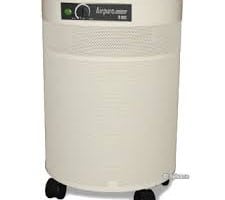
As the cold season sets in, many people will turn to wood burning stoves and fireplaces to keep their homes warm. Contrary to popular belief, modern wood stoves are actually a rather efficient heating method, leading many to turn to them in order to save on the expense of propane or natural gas. Wood burning stoves and fireplaces, however, have one major disadvantage that most people do not think about when selecting them to heat their homes. The smoke produced by the burning of wood can negatively affect indoor air quality to a surprisingly high degree. In fact, local-level health administrations will frequently ask residents to avoid using wood burning stoves and fireplaces during periods of extremely cold weather in conjunction with stagnant air masses because of the amount of air pollution that they can create.
Effects of Wood Smoke on Human Health
Clearly, such pollution is far from beneficial for human health. A warning paper issued by the New Hampshire Department of Environmental Services suggests that the greatest potential danger from wood stove smoke comes from the fine particulate matter (10 microns or less) that is a part of it. These particles, when inhaled, can work their ways into the lower respiratory system, causing difficulty in breathing and aggravating existing breathing conditions, such as asthma or bronchitis. Long term exposure to a high enough concentration of these particles can also cause irrevocable lung damage.
How to Maintain High Air Quality when Using a Wood Stove
Having a high-efficiency wood stove that has been properly installed and is ventilated in the manner recommended by its manufacturer is a good starting point for reducing air pollution. Certainly, newer wood stoves are much more efficient than their older counterparts or open fireplaces. Using wood that has been air-dried can also help, as moisture in the wood will cause less complete combustion of the material. There will always be, however, some amount of resulting air pollution. To eliminate this remaining airborne pollution, an air purifier is the best option.
The most basic air purification systems that can be employed for removing smoke pollution are those using HEPA filtration systems. As was mentioned earlier, the most dangerous element of wood smoke is the fine particulate matter that it produces that is less than 10 microns in diameter. To pass filtration standards, all HEPA purifiers are required to effectively filter all particles above 0.3 microns in size at an efficiency rate of at least 99.97%. Air purifiers equipped with HEPA filtration systems, therefore, will remove the part of wood stove pollution that has the greatest negative impact on air quality.